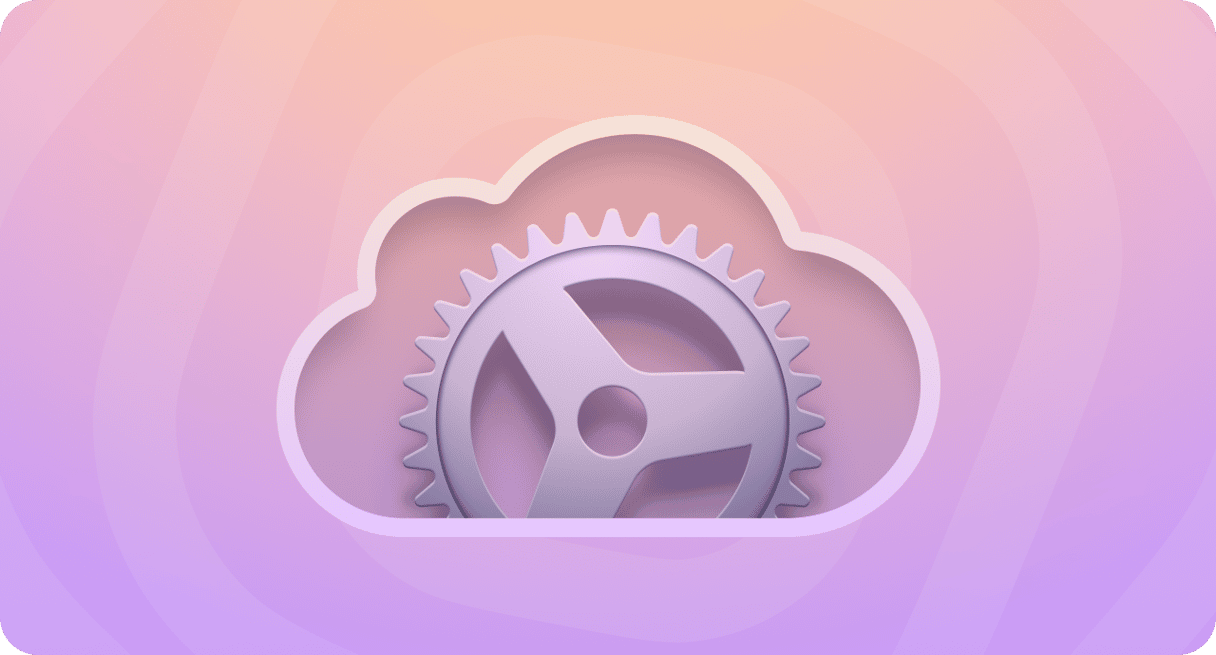Cloud automation is a powerful set of software tools that IT teams can use to manage and streamline the deployment, provisioning, and management of cloud resources. These tools allow for infrastructure automation, which means provisioning and configuring cloud infrastructure, as well as application automation, which focuses on deploying and managing cloud-based applications and services.

In this article, I’ll take a deep dive into the world of cloud automation: explain what is cloud automation, explore the different types of automation and the benefits it offers, and describe some key use cases that demonstrate its effectiveness in practice.
Main types of cloud automation
Before you dive into the benefits of cloud automation, it’s important to understand the two main types of automation: infrastructure automation and application automation.
Infrastructure automation involves the use of software tools to automate the provisioning, configuration, and management of cloud infrastructure. This includes virtual machines, storage, networking, and other cloud resources. With infrastructure automation, IT teams can quickly deploy and manage resources without having to manually configure each individual component. This not only saves time but also reduces the risks of human error.
Application automation, on the other hand, focuses on the deployment and management of cloud-based applications and services. This involves using software tools to automate the building, testing, and deployment of software applications in the cloud. By automating these processes, IT teams can speed up the delivery of new applications and services while also improving their quality and reliability.
Why cloud automation is important for enterprises
Cloud automation is a critical tool for IT teams in today’s fast-paced digital environment. By automating routine tasks, IT teams can focus on more strategic initiatives that help drive the business forward. Additionally, it reduces the risks of human error and improves reliability, which is especially important in mission-critical applications and services.
Another key benefit of cloud automation is its ability to optimize resource utilization. By automating the scaling of resources based on demand, IT teams can ensure that they are only paying for the resources they need. This can help reduce costs and improve the bottom line.
Finally, cloud automation helps enterprises be more agile and responsive to changes in the business environment. Using automation in cloud, IT teams can quickly deploy and manage resources, which enables the business to be more responsive to changing market conditions and customer needs.
Cloud automation benefits
Let’s take a closer look at some of the benefits that cloud automation offers enterprises:
Improved efficiency
By automating routine tasks, IT teams can reduce the time and effort required to manage cloud resources. This not only improves efficiency but also enables IT teams to focus on more strategic initiatives.
Increased reliability
With cloud automation, the risks of human error decrease significantly. As a result, reliability improves, and it is crucial in mission-critical applications and services.
Faster deployment of resources
With automation in place, IT teams can quickly deploy new resources, which enables the business to be more responsive to changes in demand.
Greater agility
With automation in place, enterprises can become more responsive and agile to changes in the business environment, which is critical in today’s fast-paced digital landscape.
Use cases of cloud automation
To give you a better sense of how cloud automation is used in practice, here are five real-world examples:
Continuous Integration and Deployment
Cloud automation tools can be used to automate the build, test, and deployment of software applications. This can help speed up the delivery of new applications while also improving their quality and reliability.
Disaster Recovery
Cloud automation can be used to automate the backup and recovery of data in the event of a disaster.
Resource Optimization
A cloud automation tool can be used to automatically scale resources up or down based on demand. This can help reduce costs and improve resource utilization while ensuring that the business has the resources it needs to operate effectively.
Security and Compliance
Cloud automation can be used to automate the enforcement of security policies and compliance requirements. This ensures that the organization remains compliant with regulations and best practices while also reducing the risk of security breaches.
DevOps
Cloud automation can be used to automate the collaboration between development and operations teams. This can help improve the speed and quality of software delivery while also reducing the risk of errors and conflicts between teams.
Using cloud automation on Mac computers
When it comes to using cloud automation on Mac computers, there are some important considerations to keep in mind. For example, certain cloud automation tools may not be compatible with Mac operating systems, which can limit the types of automation that can be implemented. Additionally, some cloud providers may not offer the same level of support for Mac environments, which can require IT teams to develop their own solutions.
Despite these challenges, there are still many use cases for cloud automation on Macs. For example, IT teams can use cloud automation tools to automate the deployment and management of Mac applications and updates as well as to provision and configure cloud infrastructure for Mac-based services. Additionally, cloud automation can be used to automate backup and disaster recovery for Mac-based data as well as enforce security policies and compliance requirements for Mac environments.
Cloud automation is a powerful tool for IT teams, enabling them to manage cloud resources efficiently and effectively. By automating routine tasks, organizations can reduce the risks of human error, improve reliability, and free up staff time to focus on more strategic initiatives. Additionally, cloud automation can help reduce costs, improve resource utilization, and enable enterprises to be more agile and responsive to changes in the business environment.
With the right approach and tools, cloud automation can be implemented on Mac computers to help streamline operations and improve efficiency. Whether you’re looking to automate continuous integration and deployment, disaster recovery, resource optimization, security, and compliance, or DevOps, cloud automation is an essential tool for IT teams in today’s fast-paced digital landscape.







